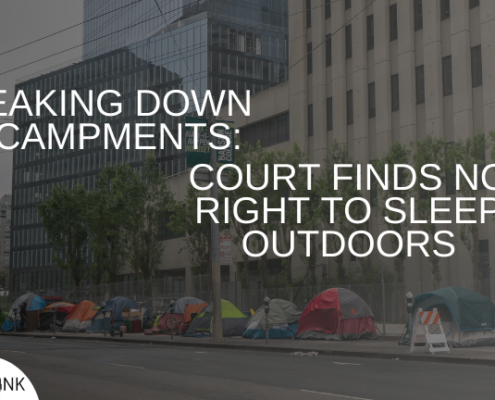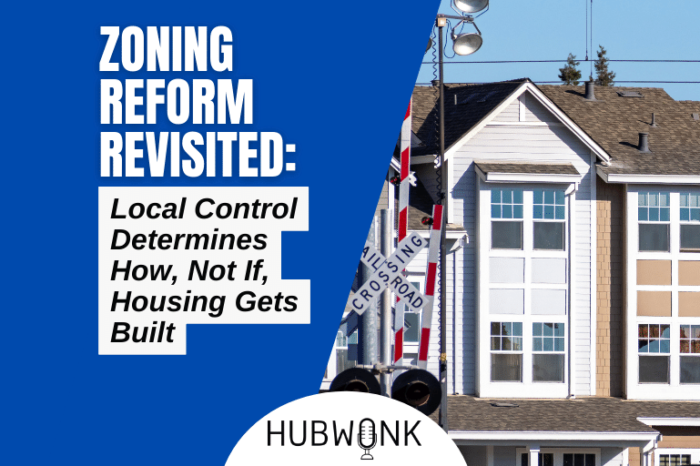Zoning Reform Revisited: Local Control Determines How, Not If, Housing Gets Built
/in Economic Opportunity, Featured, Housing, Podcast Hubwonk /by Editorial Staff
Hubwonk host Joe Selvaggi talks with Pioneer research associate Andrew Mikula about the need for affordable housing near the mass transit network and the requirements and local design opportunities of the 3A zoning reform law. Read Pioneer Institute’s recent public comment on this topic.
Guest
 Andrew Mikula is a Research Associate at Pioneer Institute and candidate for a Master’s in Urban Planning at Harvard University.
Andrew Mikula is a Research Associate at Pioneer Institute and candidate for a Master’s in Urban Planning at Harvard University.
WATCH:
Get new episodes of Hubwonk in your inbox!
Read a Transcript of This Episode
Please excuse typos.
Joe Selvaggi:
This is Hubwonk. I’m Joe Selvaggi.
Joe Selvaggi:
Welcome to Hubwonk, a podcast of Pioneer Institute, a think tank in Boston. Greater Boston has among the highest housing costs in the nation. Driving many low and middle income people to live farther from its thriving job market and its mass transit network. This crisis of affordability is primarily driven by restrictive local zoning laws that discourage new, more dense and less expensive townhouses and condominiums. Massachusetts has attempted to encourage affordable housing in the past with laws like 40B, which offered developers the ability to override local zoning in towns with little or no affordable units. But in the 53 years since 40B’s passage, the law has not had the effect of allowing housing supply to keep pace with housing demand, to further address this issue. A new zoning reform law that took effect in 2021 now requires communities near MBTA stops to each zone for at least 750 multifamily units by right. Designed to overcome the weaknesses of the earlier 40B legislation, the law and the guidelines were crafted in a way that encourages local design while also ensuring the units will be affordable for working families eager to be near the transit network.
Joe Selvaggi:
This zoning act referred to as 3A continues to evolve with lawmakers soliciting input from the 175 affected communities as the best ways to blend the need for more housing, with respect for each town’s design preferences. Is 3A the right law to help address the affordable housing prices in Massachusetts, or will it prove to be insufficient to compel communities to develop viable plans for new homes? My guest today is Pioneer Institute’s research associate and candidate for a master’s degree in public planning at Harvard, Andrew Mikula. Andrew recently wrote a public comment for Pioneer on the 3A compliance guidelines in which he outlined his view on the merits of the law and where the law may need improvement to achieve its goals. When I return, I’ll be joined by Pioneer Institute’s Andrew Mikula. Okay. We’re back. This is Hubwonk, I’m Joe Selvaggi, and I’m pleased to welcome back to the show fellow Pioneer Institute contributor, and now candidate for a master’s degree in public planning at Harvard, Andrew Mikula. Good to have you on the show, Andrew.
Andrew Mikula:
Joe, always great to be a back on Hubwonk. Thank you.
Joe Selvaggi:
Well, I enjoyed reading your public comment on the compliance guidelines for the new 3A zoning reform, maybe a dry topic for our listeners, but I hope we can make it exciting and get into some of the details. As our Hubwonk listeners know, zoning does touch many of the issues we cover on the podcast that includes the high cost of housing the benefit of mass transitfor commuters and the environment and the encouragement of our Massachusetts economy. We all want to have a good place to live that helps everyone. So let’s start off with the the case for zoning reform. Why do we need to have this thing called zoning reform in the state?
Andrew Mikula:
Yeah I believe it was urban economist Ed Glaeser, who observed that reforming local land use controls is one of those rare areas in which the libertarian and the progressive agree obviously that doesn’t extend to every individual with those persuasions. But I think that it’s the kind of union of kind of advancing property rights. And also when you restrict the supply of housing, you know, wealthier people tend to bid up the price of existing units that otherwise might have remained more affordable. And so this has huge implications for who can access jobs and amenities in a given area because when you restrict the supply of housing in an area, the people who would have lived in those new units don’t just go away. They’re forced to move elsewhere, further outside of, or away from major job centers.
Andrew Mikula:
And often to communities that have, you know worse schools or higher crime, et cetera, than places with the most stringent zoning laws. So it’s really the intersection of economic opportunity property rights and also the environment because people living further away from job centers means, you know, you have to drive further to get anywhere and also communities where your push to when development isn’t allowed to kind of concentrate within the existing footprint of community. You know, that development tends to be kind of sprawling and away from transit and walkable villages.
Joe Selvaggi:
Well, I’m glad you point that out. I’ll entertain my own little rant here. I’m passionate about zoning. And I think I have friends who push back both from my conservative friends on, on the one side and my progressive friends on the other I’ll remind the conservatives on the that are listening that, but we are proud of the fact that this is the land of opportunity. So we should all be working to, to enlarge the, the range of opportunity for our fellow Americans. And for those on the on the progressive side, I see many in the Le living in the leafy suburbs with those nifty on signs that say, you know, in this house, we believe they’re the same people who will have be at the, the zoning meetings and want to restrict what can be built in their community.
Joe Selvaggi:
And they, I think as you mentioned so well they don’t realize the consequence of, of limiting growth or, or building. I means only very, very affluent people can, can live in that community. And if I’ll, I’ll editorialize one little bit more in my view the, the most pernicious effects of poverty or low income is not lack of food or shelter or clothing. It’s rather the, the isolation that’s created in those communities where they have very few links to good education, good employment, or connections to those civic institutions, you know, those little platoons that, that connect us to greatest society that’ll service for the rest of our lives. So zoning reform is important to me from my perspective, because I wanna make sure that lower income Americans aren’t in a sense isolated from the society and the community and the employment world.
Joe Selvaggi:
So, so I’ll set to, you know, lay my cards on the table at the start of our conversation and, and dive in from there. So so let’s follow the, the history of zone owning reform. Back when I was at Kennedy school, we, we studied a lot about this 40 B. This was back in 1969. It was a, an aspiration to encourage communities to build more diverse housing supply. Give us a little history on how what that 40 B entailed and what have been the results of start with the positive effects in the last, I guess, 50 years now.
Andrew Mikula:
Yeah. So chapter 40 B basically mandated that every community in Massachusetts have at least 10% of its housing stock in the states, subsidized housing inventory, or Shi to both increase the stock of affordable housing overall and avoid concentrating it in areas that were deprived of economic opportunity before. And like you said, allowing kind of access to high opportunity areas for, for people of lesser means. And if you don’t comply with chapter 40 B developers can essentially ignore certain aspects of your town zoning laws. And the state can overturn any denial of a project whose residential component has at least 20 to 25% affordable units. So chapter 40 B success has been in creating more 60,000 units of housing that likely otherwise wouldn’t have been built over the last 50 plus years. And many of those, those units are, you know, permanently affordable deed, restricted, et cetera.
Joe Selvaggi:
So that sounds like it, you know, 60,000 sounds like a lot, although it’s 50 years or 55 years, that’s yeah. De of the math, not, not that many. How is its worthy aspirations fallen short have, have all the communities in, in Massachusetts Leafly complied with its directions.
Andrew Mikula:
Yeah, I think you’re you’re setting up the answer there quite intentionally. So the reality is more than three quarters of communities in Massachusetts still don’t comply with 40 B. A lot of them have taken the risk over the years, that if they don’t take steps to meet this, the affordable housing goal set by the state, then developers simply wouldn’t propose any projects under chapter 40 B that would allow them to skirt the town zoning laws. And the last decade or so was really a tipping point in a lot of Boston suburbs in that they started seeing these proposals come through because the market was really hot. The, the rents started to adjust toy, including these affordable units and the state was more desperate than ever to make a dent in this housing crisis, but at the same time, this sort of coercive tactic because of non-compliance with 40 B has in a lot of ways, deepened the hostility between real estate developers and, and some suburban communities. So, so I guess that’s the negative aspect of chapter 40 B.
Joe Selvaggi:
So the need has become greater. The resistance has become greater. So an unstoppable force means it’s the immovable object. So here we are back in 2021, then we passed something called section three, a we’ll call it section three, a, which was meant to learn from the, I guess, the shortcomings of 40 B and, and try to take another crack at it and, and sort of provide some kind of compromise between the needs of the community and the needs for more dense development. So let’s let’s start with three a what weaknesses in 48 did it address and how did it address it?
Andrew Mikula:
So big section three, a requires communities with access to the M BTA Boston’s public transit network to allocate at least 50 acres of land near an M BTA station to buy right multifamily housing development of a density of at least 15 acres, excuse me, 15 units per acre. So the law also requires that these new zoning districts accommodate families with children because oftentimes suburban communities only build dense housing that’s made for seniors because, you know, they don’t want to have to pay for kids to go to school. Right. so this section three a is an effort to tie service, provision buses and trains to connect these places to good jobs shops and recreation opportunities to the state’s ambitions to make sure everyone is able to obtain a suitable and affordable home in a tight market.
Joe Selvaggi:
I, I find that interesting. I don’t think that there’s, anything’s such thing in 40 B, but in three a the logic follow me if, if, if this is true or not, let me know. I think the logic is if you have a a tee stop and, and it does differentiate between a, a train light rail or a bus, but let’s just say, if you have access to mass transit therefore you have some public good, that is, you’ve been fortunate enough to have been built in your town for your benefit. And perhaps as, as a payback for such a wonderful resource I don’t know what the right word would be, but I’m gonna use payback. You ought to then become as you have this wonderful benefit in a sense payback by providing access or some set aside land 50 acres on which more dense housing can be built with the logic being, okay. The people who move in there can easily get to their jobs using mass transit fewer cars, it’s greener development. And you know, everybody wins the environment, the community and the people who go live there.
Andrew Mikula:
Yeah, I think, yeah, I think, you know, you’re absolutely right about the, the kind of the pact that the state is, is signing with these communities that if you kind of benefit from having a direct connection via mass transit to greater Boston, all the opportunities set of fors, you know, you need to kind of contribute to overcoming barriers to opportunities that are kind of the housing prices and, and, and lack of availability of appropriate homes for, for families. You know, that’s, that’s what the problem is that that’s kind of solving in a way this, this law is attempting to solve.
Joe Selvaggi:
And let’s be honest, if you have a, a teeth or brain stop in your town your house is more valuable by, by, by virtue of that fact, right? You you know, your commuters paradise, as they often say in the listing how many communities are identified in three a I know there’s 300, so communities in, in Massachusetts, how many are connected by, by mass transit?
Andrew Mikula:
Yeah. So the state definition of MBTA communities they’re 175 almost half of all the municipalities in the state. And the state actually further differentiates these communities based on whether they have access to a subway or light rail station rapid transit, a commuter rail station that often travels further distances or only bus lines or are merely communities that are merely close to a tees stop, that’s located in another community. So there’s some differentiation in, in the bylaw, what the uniting kind of factor is. They either have a bus or a train station that ultimately connects them to Boston, or, you know, they benefit from the presence of a bus or train station in a nearby community.
Joe Selvaggi:
So it could be a train stop in your town or near a train stop in someone else’s town. But they have different categories. We’ll get a little bit into that later on. Of course now we’re talking about natural tension between communities have decided not to build more dense housing you either deliberately or less deliberately and and regional need for housing, which we all agree is, is, is almost at crisis levels here. So 40 B kind of went in this direction and a lot of people in a sense, ignored it. How does three a have a little more bite? How does it sort of square that circle communities don’t want it the region does want it, how do we sort of in a sense, appease or acknowledge and, and assuage the concerns of communities that something someone’s not gonna come in and build something they don’t like?
Andrew Mikula:
Yeah. So section three a is at an attempt, you know, pretty similar to 40 B in a way to make these towns and cities proactively anticipate denser development so that they can determine its location, design details and other specifications on their own terms. 50 acres of dense zoning sound like a lot, but really it’s less than 10% of the land within a half mile radius of a given tee stop. So it’s still providing some flexibility to local governments in the implementation stage, which I’d say is crucial for the political legitimacy of this process. Also, unlike chapter 40 B, it’s not every community in the state that has to comply with this. It’s only communities that directly benefit from the MBT services. But even if you’re, you know, one of those communities I think the, the kind of silver lining is you get a lot of say in exactly what this 50 acres of dense zoning is going to look like in your community.
Joe Selvaggi:
So I don’t wanna generalize, but I just say, I, I think with 40 B the dynamic was for those towns that didn’t have diverse housing stock it allowed a developer to override the local zoning in a sense, build a project and effectively force it on a community. And, and there, we had a pitch battle. Instead, this seems like a very, very different approach, which is you say to each of those 175 communities, you know, you tell us where you want the 50 acres to be, and you tell, and you give us design parameters that integrate well with your community, right? The project be developed and sold the community itself, defines what the project will look like. And, and then, you know, developers can either go after it or not do, is that a meaningful difference? Is, do I have that about right?
Andrew Mikula:
Yes. And I, and I, I think a big piece I haven’t necessarily touched upon so far is, you know, these multifamily zoning districts need to be allow for by right development. So, you know, in mandating by right development, the process gets a lot less discretionary for, you know, approvals at local level. You know, it’s still gonna require bureaucrats to interpret the law, but it should be more transparent about why a project is being approved or denied than it was before. And that both kind of affords a, a level of, of control at the local level in a way that wasn’t there before. Because it’s either, you know, a yes or a no, and there’s, there’s not much in between. And it could help potentially reduce corruption in the real estate development process, which has been in an issue in, in greater Boston for a long time,
Joe Selvaggi:
Explain that dynamic. So, okay. In the old world, the 40 B I wanna build the town doesn’t want this project. I appeal to the state and the state said, no, you gotta let this guy build. But then they drag me through the approval process because they you know, I have to jump through hoops naturally, the big developer who has deep pockets might grease the skids by <affirmative> for lack of a better term bribing those people who are approving the project. How does, I mean, we can see how the, those incentives would exist and we don’t want this to happen. How would three a prevent that kind of dynamic? I know it’s maybe a occur, but how, how do you, how would you prevent bribery in, in this kind of world?
Andrew Mikula:
Yeah, I think, you know, by right development makes it less likely that corruption will occur because, you know, you really have to determine in advance what the criteria are for whether development’s allowed in a good even site and, and for a given project. So hypothetically it should all be in the, the codes, whether this is a given project is allowable, as opposed to having a kind of design review board or a review process among public officials that’s up for negotiation. And I think that, you know, our open meeting laws in Massachusetts go a long way towards increasing transparency around this regardless. But I think that there are certainly, or could be opportunities under something like chapter 40 B to kind of compromise the integrity of officials. And in the past, it’s also been controversial when cities and towns kind of require developers to do to perform kind of mitigations for the impacts of their project that aren’t necessarily directly related to the project. You know, I think paving adjacent streets or paying into the, kind of the city’s school fund is one thing. But if you are doing kind of offsite interventions and whatnot as a form of mitigation to the town that gets legally ambiguous,
Joe Selvaggi:
Right. That that’s the town’s shaking down the developer. So it goes both ways, right? Mm-Hmm <affirmative> so, again, I don’t wanna put you find a point on it, but because three a the town, what the parameters of an acceptable building are, it hasn’t been black and white, the meetings are public. So provided the developer sticks to that plan. There should, there’s no really prerogative to, to shoot it down. You know, you, they have to come up with the reason why it violated the rules ahead of time. We set the rules, you follow the rules, the thing gets built. There’s no sort of back and forth no, no changing of the gold post as it were that, that, that seems to make sense. Now we’ve talked about many of the positive attributes of the three a and how it can encourage towns to have some latitude over what gets built, where it gets built you in your paper, in your comments, you did have some criticism of where it falls short. I think it, in particular you point out that there’s 50 acres and 15 units per acre in some towns you, you need some flexibility. You need to be able to say your goal is not square miles or square feet, but rather how many units get built. We, we, we’re not concerned about how big the project is, but how many people live there, same more about your concerns in that regard.
Andrew Mikula:
Yeah, so, you know, like I mentioned, it’s 15 units per acre is how dense each zone is required to be which is certainly less dense than most of the block sized, four to six story apartment buildings that have been built throughout the Boston region and recent year. And in my public comment, I can compare the density level mandated by three a, to a row of triple Deckers and Wooster with enough space between them, for each one to have a driveway. But to individual towns can certainly go higher than that. But right now higher than that 15, eight units per or acre. But right now they can’t go lower. And this is in my mind, an opportunity to have even more flexibility in the implementation stage. I think, you know, density is a, you know, in some regards a goal in and of itself in that it can require, or it can enable more compact walkable communities, but really it’s more of a byproduct of the proximity of amenities.
Andrew Mikula:
And so section three, a guidelines seem to focus more on the total amount of land area, devoted to multifamily housing around the transit amenities rather than the actual number of units that could be created in that zoning district. So I think it’s a matter of you know, the agency that’s responsible for, for crafting these guidelines, the, the department of housing and community development and massive two sets kind of getting its messaging right on this. And I’m interested in how they respond to my comments on their use of land area as an important compliance indicator, as opposed to what I think should be the ultimate goal increasing housing production and ultimately affordability.
Joe Selvaggi:
So you would advocate, you say, some town might say let’s we’ll, we’ll, we’ll cut it down to 25 acres, but we’ll make it twice as dense that you, you think there should be that kind of flexibility based on the needs of the town
Andrew Mikula:
Mm-Hmm <affirmative>. And I could, I could certainly see a case at the town level for making that sort of arrangement, because if you think about a limited area of 50 acres, you know, why wouldn’t you want, you know, 25 of those acres to be reserved for open space or new civic uses or, or something like that. And I understand that that kind of the, a higher density level of 15 nos per acre might not feel right to every community, but I think at the, the very least it should be allowed in the bylaw. It shouldn’t be as prescriptive as it is from the state’s perspective on the, the total land area devoted to this that increasing housing production is a much more noble goal than having development spread out over a given amount of a life.
Joe Selvaggi:
I did a little, your, your paper sparked my curiosity about how dense my community is. I’m a back Bayer, it’s a 61 units per acre. So, and it’s not such a bad life here. So in, in <laugh> and reading your comments it seems like there’s a, a mandate for, you know, setting aside this land. Is there any specific requirement to actually build there, or is the assumption that, you know, if, if you set it aside, you create the parameters the market will take care of itself. Someone will show up and start building is there any mandate to, to actually build
Andrew Mikula:
Well, yeah, not really. The D H C D has focused on the regulatory aspects of development and rather than the kind of ultimate result. And like I said, I’m, I’m, I think there might be some room for a shift in the messaging down a line on this, but right now, I think the, the crucial thing the D H C D is addressing right now is the need for by right development that occurs with these zoning districts as opposed to making the process as kind of messy and, and discretionary as it has been in recent years when these communities have wrestled with the question of density. And so I think if you allow the, the state to kind of you know, focus on the regulatory aspects upfront then, and there’s enough, flexibility, enough kind of scope to the the zoning changes, then, you know, eventually if these developments are viable financially some of them will get built, maybe not all, but I, I think that part of zoning reform is accepting kind of uncertainty in how exactly this plays out. So,
Joe Selvaggi:
Oh, and that’s a great answer. So we didn’t go into detail, but I’d like to do that. Now, there are subtypes within these communities 175 communities, but I think there’s four subtypes and each has a different deadline for when it needs to be done. And I think in your paper, you mentioned, it’s, it’s sort of upside down the, those communities that are perhaps bigger and will have more of difficulty finding 50 acres or whatever their plan is. They’re first to comply. And those more rural communities have a little more time. You, you mentioned it’s probably the other way around you know, if you don’t have wide open space, you, you, you’ve got a lot of other competing interests. It’s gonna take you more time than it will for the more community, but say more about four different types and, and where those deadlines fall.
Andrew Mikula:
Yeah. At the end of the day, I think it’s, you know, one of the smaller kind of details in from my my public comments, but I did mention that MBTA communities located on subway and light rail lines, you know, mall than Brookline Quincy, et cetera, have to submit their plans for achieving compliance before more suburban or exurban community commuter rail towns do like Grotton Ashland Middleborough. So to me, this doesn’t make sense because it’s probably gonna be harder to determine where to put these zoning districts in already built up communities. Especially once you consider that a lot of those communities have diverse immigrant groups, significant student populations, et cetera, that might need some sort of special outreach efforts. So there are a lot of other aspects of the guide lines where drawing a distinction among the MBTA communities makes sense, but I don’t think the deadlines for submitting action plans is one of them
Joe Selvaggi:
Now listeners to this are, you know, again, if they’re for against it, I think there’s probably a divided audience. Some are saying is the last thing I want and others are saying, you know, this is a great idea. Is there anything, you know someone who isn’t pleased with the, the idea of three a, could they be immediately out there changing the zoning laws in their town to, in a sense, make it impossible for these zones to be created? Is, is there a sort of a defensive move that, that will thwart the best intentions of this legislation?
Andrew Mikula:
Yeah, that, that’s an important question. So the D H C D wants to monitor communities so that it can rescind a community’s compliant status if they change their multi-family transit oriented zoning districts. After the fact the problem is that’s a huge administrative burden on the D H C D to keep track of zoning changes in 175 towns and cities. So that’s one of the major enforcement related questions about section three, a that is yet to be answered. And ideally the towns and cities would have to report these zoning changes to the D H C D themselves. But for now it’s unclear exactly how that will be implemented and enforced.
Joe Selvaggi:
Well, that brings me to, again, we’re getting close to our, our, the end of our time together. Then we started the show by talking about 40B many, many communities just said, thanks, but no, thanks. Really what power does the state have to enforce 3A, you know, you, you’re, you’re dealing with a zoning requirement, but the community’s just saying, you know, thank you, we’re all set, you know, don’t bother us. What, what enforcement mechanism is there.
Andrew Mikula:
Yeah, I, I touched upon it earlier. But basically there’s a rigorous process for coming into compliance with section three, a that involves submitting action plans and later reporting facts about the zoning districts to the D H C, D, and the big kind of punishment for not doing so, is that the towns that are out of compliance, won’t be able to obtain grants for infrastructure, housing choice, or other local capital projects
Joe Selvaggi:
But do all towns. And I think that you addressed this in paper or a paper you sent to me, I think maybe even in the Brookings paper that you also sent to me you know, only a small percentage of towns get those grants, you know, in general, more affluent communities may not need these, these grants. So there there’s no in the proverbial carrot and stick scenario, there’s no carrot. Is there a stick if, if there is no carrot, if the community doesn’t need the state in any way?
Andrew Mikula:
Yeah. I think there’s a case to be made that taking away these grant opportunities will not sufficiently deter some communities from simply ignoring section 3A’s requirements. But perhaps a stricter punishment scheme would hurt the political viability of the law overall. So it’s a balancing act. I, I think in the long term, the big stick is that as long as Massachusetts has an affordable housing crisis in know this sort of paradigm of the state playing a bigger role in putting forth sustainable development proposals is not going away. You know, California is even further down this path than we are. And even within Massachusetts, I know there are several communities that you know, learn their lesson on 40 B and want to be more proactive about implementing section three, a and so I think the, the kind of long view of this is the recognition that, you know, it’s now, or never, you can plan for, for change, or, you know, the state can, can kind of pull up the rug out from under take that control away. And you know, maybe the ultimatum hasn’t quite come to pass for, for a lot of these communities yet, but I think that it’s going to, it’s only gonna get stricter going forward. As long as this housing crisis is continues to get worse.
Joe Selvaggi:
So you know, this is where we’ll have to wrap up our show, but to translate thatit’s coming more diverse housing stock is coming to your community. It behooves the town leaders to make a plan that works for that community. Otherwise, something that may not work as well for that community is going to be imposed on them in the future. Inevitably. Is that a fair summation?
Andrew Mikula:
I think so. I think the politics of this have changed rapidly even in the last 10 years. And there’s now a greater kind of recognition that this housing shortage isn’t only affecting, you know, people who are low income. It’s also the middle class. It’s also, you know, working people, teachers and firefighters and mail carriers. Right. So and I think that’s, that started to kind of change the calculus on to what extent this needs to be top priority on Beacon Hill.
Joe Selvaggi:
Indeed, we want a healthy community and a home for all the people who work here, not just the very rich and unfortunately the very poor and we want to integrate communities. So we’re bumping up against each other in each of our respective communities. We don’t want to be economically isolated or economically segregated. We want to have more integrated communities. I think that’s music to those of us who love markets ears. These are artificial barriers, not real barriers and we’ll all do better to see some reform here. So let’s take us out here by telling us where can our listeners learn more about your comments and how can they, in a sense bring this knowledge to their next city hall planning meeting and engage with their community leaders.
Andrew Mikula:
Yeah, the state has a great web page full of information on section three, a it’s called multifamily zoning requirement for MBTA communities. ‘d Also recommend checking out Salim Firth’s great map pointing out which communities are currently in compliance and which aren’t, he’s
Joe Selvaggi:
At the he’s at the me Mercatus Institute, right. Or center Mercatus center,
Andrew Mikula:
Right? Yes. Thank you. Yeah. <laugh> yeah. Oh, you mean our,
Joe Selvaggi:
We don’t all know, we don’t all know where it is. <Laugh>
Andrew Mikula:
On. All right. And, and also encourage you to get in touch with your local town planner, community development department, or town manager, and, and ask about what your community is doing to comply with the new law. And if you wanna read my public comments in folder there@pioneerinstitute.org under our recent research section.
Joe Selvaggi:
Wonderful. Well, that’s great. Well, we’ll wrap up this show there. That’s, that’s been a lot, it’s a lot for our listeners to digest, but I think you were clear at least we’ve wet their appetite for this issue. And then they can take it from there in their own local community. So I wanna thank you very much for joining me again on hub, long as, as usual, you’re a fund of information.
Andrew Mikula:
Thank you, Joe. Always a pleasure to be on Hubwonk.
Joe Selvaggi:
This has been another episode of Hubwonk, a podcast of Pioneer Institute, a think tank in Boston. If you enjoy today, show there’s several ways to support us and Pioneer Institute. It would be easier for you and better for us. If you subscribe to Hubwonk on your iTunes podcast, catcher, if you’d like to make it easier for others to find Hubwonk, it would be great if you offer a five star rating or a favorable review, we’re always grateful. If you want to share Hubwonk with friends, if you have ideas or comments or suggestions for me on topics for future episodes, you’re welcome to email me at Hubwonk@pioneerinstitute.org. Please join me next week for a new episode of Hubwonk.
Recent Episodes

Registering Republican Realignment: GOP Convention Showcases Conservatism’s New Direction

Candidate Selection Breakdown: Presidential Primary Primacy or Determined Delegate Detour

Breaking Down Encampments: Court Finds no Right to Sleep Outdoors

Underfunding Overdose Alternatives: Price Controls Hinder Search for Non-Addictive Opioids

Unlocking Affordable Housing: Sources and Solutions for Cost Crisis

Jawboning Free Speech: State Coercion Finds Limits at Supreme Court

Protectionism’s Bipartisan Embrace: Who Pays When Imports Cost More




